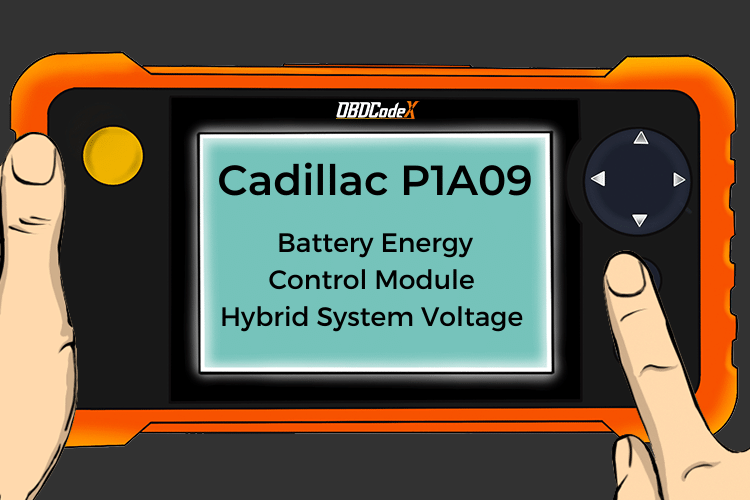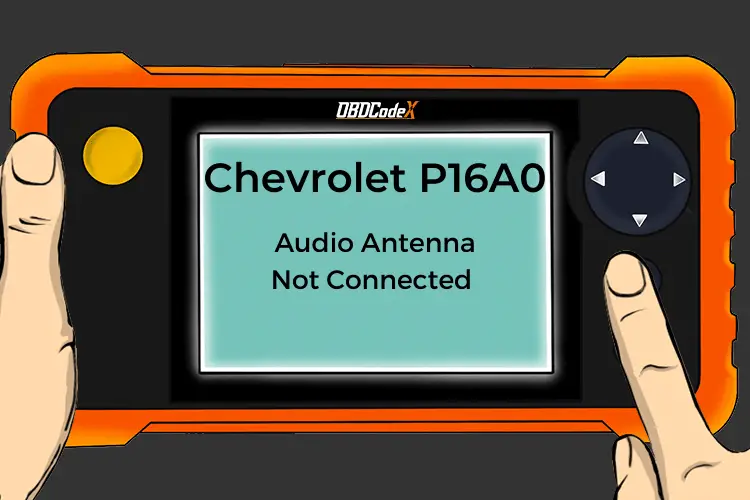P040A: Exhaust Gas Recirculation Temperature Sensor A Circuit
Is your scanner showing P040A?
No worries. We'll show you what it means and how to deal with it.
P040A: Exhaust Gas Recirculation Temperature Sensor A Circuit
OVERVIEWWhat Does The P040A Code Mean?
Before the EGR (Exhaust Gas Recirculation) systems were effectively introduced to vehicles in the 1970’s, engines were actively wasting unburned fuel and expelling it to the atmosphere. These days on the other hand, a vehicle has to have a certain emission rating in order to proceed with production.
The use of EGR systems has greatly improved emissions by recirculating fresh exhaust coming from the exhaust manifold and/or other parts of the exhaust system and recycling or re-burning it to make sure we are efficiently burning the fuel that we pay for with our hard earned cash!
The function of the EGR temperature sensor is essentially to provide a means for the ECM (Engine Control Module) to monitor the temperature within the EGR system and/or adjust flow accordingly using the EGR valve. It does this easily using a common temperature sensitive resistor-type sensor.
Your OBD (On-Board Diagnostic) scan tool may show P040A and associated codes active when the ECM detects a fault within the EGR temperature sensor or it’s circuits. As I mentioned earlier, the system involves the exhaust which is hot, not only that but you are dealing with one of the hottest areas of the vehicle so be aware of where your hands/fingers are even with the engine off for a short period of time.
The code P040A Exhaust Gas Recirculation Temperature Sensor A Circuit is set by the ECM when there is a detected general malfunction in the EGR Temperature Sensor “A” circuit. Refer to a vehicle specific repair manual to determine which is the “A” part of the circuit for your particular application.
What Are The Symptoms Of The P040A Code?
Symptoms of a P040A trouble code may include:
- Failed smog or emissions state/provincial test
- Engine noise (knocking, rattling, pinging, etc.)
- Louder exhaust
- Excessive exhaust smells
What Are The Potential Causes Of The P040A Code?
Causes for this P040A engine code may include:
- Defective or damaged EGR (Exhaust Gas Recirculation) temperature sensor
- EGR temperature sensor gasket leaking
- Cracked or leaking exhaust pipe in which the sensor is mounted
- Burnt wiring harness and/or sensor
- Damaged wire(s) (open, short to power, short to ground, etc.)
- Damaged connector
- ECM (Engine Control Module) issue
- Poor connections
How Serious Is This P040A Code?
Severity here varies significantly depends on your particular issue but I wouldn’t classify this as severe given the fact that the entire system was introduced to vehicles simply as an emission reduction strategy. That being said exhaust leaks aren’t “good” for your vehicle nor are leaking or defective EGR temp sensors so maintenance is the key here, sooner rather then later!
How Can You Fix The P040A Code?
Basic Step #1
First thing I would do here is check for anything we can see by just visually inspecting the sensor and surrounding EGR system, looking for exhaust leaks in particular. Also check out the sensor and its harness while your in there. Remember what I said about those high temps? They can cause havoc on plastic and rubber insulated wires so inspect them thoroughly.
TIP: Black soot may indicate an exhaust leak around the area.
Basic Step #2
A lot of EGR issues I’ve seen in the past has been caused by accumulated soot in the exhaust potentially caused by a number of things (poor maintenance, low quality fuel etc.). In this case, it is not an exception, so it may be good to clean your EGR system or at the very least the temperature sensor. Be aware that sensors mounted within the exhaust systems may feel like they are seized when trying to unfasten.
Remember, these sensors are subject to substantial temperature fluctuations, so a bit of heat using an Oxyacetylene torch (not for the layman) may help loosen the sensor. Once sensor is removed, use carburetor cleaner or similar product to effectively soak the soot. Use a wire brush to loosen soot in any overly accumulated areas. When reinstalling the clean sensor, make sure to apply some anti-seize to the threads to aid in preventing seizing.
NOTE: The last thing you want to do here is break the sensor inside the manifold/exhaust. This could be an expensive mistake so take it easy when cracking free the sensor.
Basic Step #3
Verify the integrity of the sensor by measuring actual electrical values compared to manufacturer specific desired values. Do this using your multimeter and following manufacturer specific pin-out test procedures.
Recommended Parts
Below are some recommended auto parts to help you address the trouble code affecting your vehicle and get it running smoothly again:
>>> Walker Products 273-10340 OE Exhaust Temperature Sensor
>>> Exhaust Pipe
>>> Twippo 372Pcs Waterproof Wire Connectors Kit
>>> ECU
Note: During the purchasing process, please check carefully whether the part you want to buy fits your car!
Reference Sources
P040A EGR Temp Sensor A Circuit, OBD-Codes.




